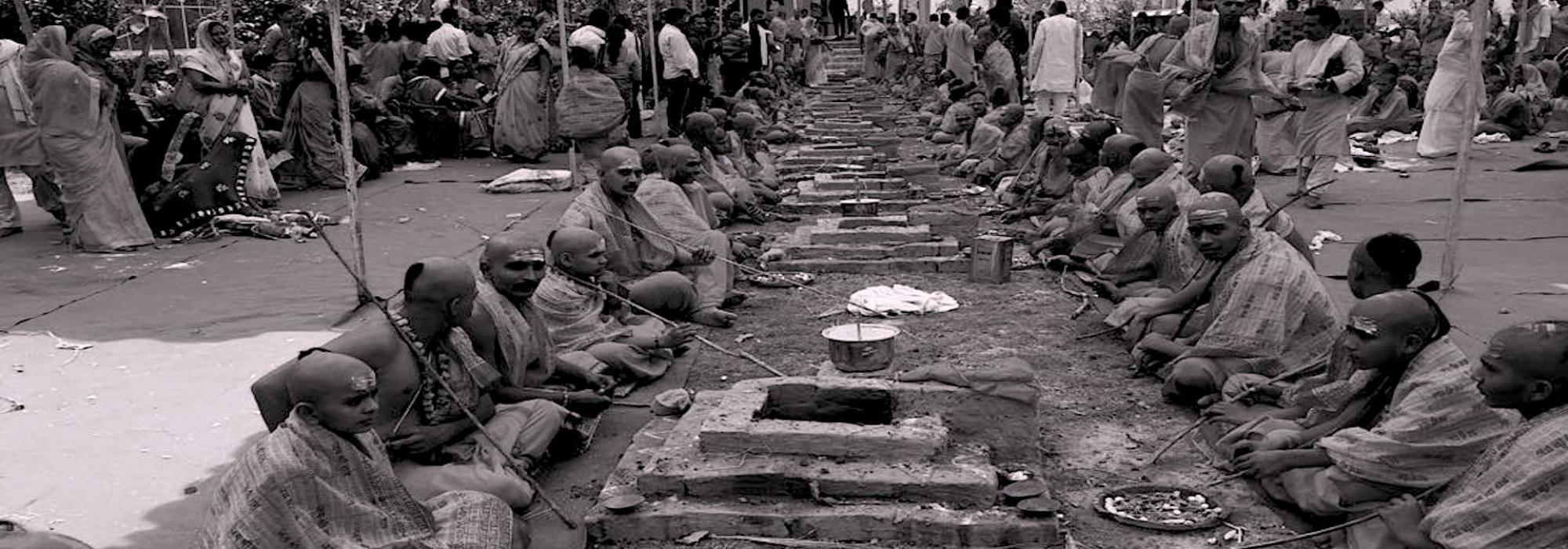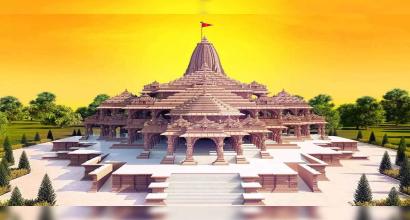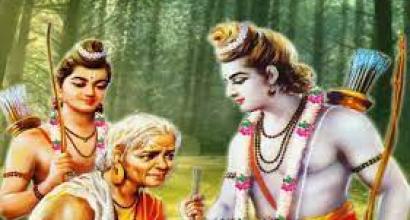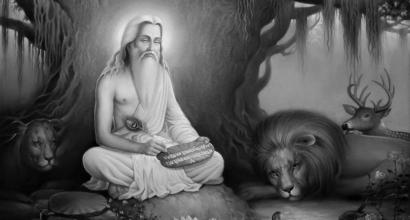Every society will have its own view of what is a significant event in the life of a person living in that geographical region and in that period in time. What remains true for all time and for all people is the fact that our life spreads from before our physical birth all the way to the future after our physical death.
When a couple feel the need to have offspring, that very moment a child is born, as an idea. After conception, the tiny embryo (technically called a ‘zygote’) is two-hundredth of an inch, which is fifteen times smaller than the tip of an average sewing needle. That develops over nine months (technically called the ‘gestation period’) and then the child is born. All through this time, the child is alive; not just in the mother’s womb but in the minds of the parents, family, and friends.
The child grows up, learns, transitions into adulthood, earns wealth, gets married, has children, has a career, retires, grows old, and dies. But the individual is only physically dead. Until the last person who remembers the individual is alive, he or she is alive.
Our ancient thinkers recognized this and earmarked sixteen different points of time from conception until the physical death that were to be recognized by means of a special ceremony. Apart from this, they also envisaged a yearly ceremony (known as śrāddha) after the death of the individual that would honour their memory.
These sixteen defining points—or ‘rites of passage’—are the ‘saṃskāras.’ While different thinkers came up with different saṃskāras, some even listing as many as forty[1], sixteen are the most common.
Our tradition recognized four broad stages in human life (caturāśramas) apart from these defining points. The four stages are Brahmacarya (student-hood), Gārhastya (life of a householder), Vānaprastha (retirement from social life), and Saṃnyāsa (complete renunciation from worldly pleasures). Most of the saṃskāras fall in the first two stages of a person’s life.
The sixteen saṃskāras are:
1. Garbhādhāna (Celebrating the Inception of a Child)
The wife invites her husband to unite with her and give her good offspring.
2. Puṃsavana (Prayer for a Male Offspring[2])
When the woman finds out that she is pregnant, her husband serves her a special dish, praying for the healthy growth of the baby. The import of this saṃskāra is sanctifying the foetus.
3. Sīmantonnayana (Baby Shower)
In an advanced stage of pregnancy, relatives and friends of the expectant mother come together to bring her cheer. This involves a ritual where the pregnant woman’s husband parts her hair at the centre.
4. Jātakarma (Celebrating the Birth)
Once the child is born, a ritual is performed to welcome the child to the world. The father whispers a prayer into the ear of the newborn, telling the child to suck the truth as if it were his mother’s milk.
5. Nāmakaraṇa (Giving a Name to the Child)
On the tenth or eleventh day after birth, relatives and friends come together; during this gathering, the name of the child is formally announced.
6. Niṣkramaṇa (First Outing)
In the third or fourth month, the child is first taken outside the home and shown a sunrise or a sunset (or taken to a temple).
7. Annaprāśana (First Meal)
After about sixth months, once the milk teeth begin to develop, the child is given solid food for the first time.
8. Karṇavedha (Piercing the Ear-lobe)
In the seventh month, the ear-lobes of the child are pierced accompanied by prayers that ask for the child to hear bliss through her ears.
9. Cūḍākaraṇa (Shaving the Head)
When the child is about a year old, his head is shaved and nails are pared. This rite symbolizes the child’s entry into personal hygiene.
10. Vidyārambha (Beginning of Education)
When the child is about five years old, she is introduced to the letters of the alphabet. This might also include prayers to goddess Sarasvatī (the deity of learning) and lord Gaṇeśa (the deity who removes obstacles; the first god of worship for many Hindus).
11. Upanayana (Entry into School)
When the child was about eight, he would be invested with a sacred thread and taught the Gāyatrī mantra. This marked his entry into formal education.
12. Vedārambha (Introduction to the Vedas)
For those students who entered into the study of Vedas, this rite (typically a yajña conducted along with the guru) marked the student’s entry into Vedic knowledge. For those who didn’t study the Vedas, there were similar rites to mark the entry of the child into a school.
13. Keśānta / Ṛtuśuddhi (Puberty Rites)
This involved, in the case of boys, shaving their facial hairs and in the case of girls, the celebration of menarche (first occurrence of menstruation).
14. Samāvartana (Graduation)
After spending about twelve years in the house of the teacher, the student would graduate. A ritual bath marked the completion of his education.
15. Vivāha (Marriage)
This signalled the coming together of a man and a woman. Depending on the community, marriage has been celebrated in different ways. Traditionally, there are eight types of marriages, including arranged marriage and love marriage.
16. Antyeṣṭi (Post-death Rites)
Upon death of the person, the dead body is typically consigned to flames on a wooden pyre. The rituals accompanying the death go on for a few days after the death.
Much of the present essay has been drawn from the History of Dharmaśāstra,[3] a seminal work in five volumes by Dr. Pandurang Vaman Kane.[4] Another important source is the book Hindu Saṃskāras[5] by Dr. Rajbali Pandey.[6]
To be continued…
Thanks to Pradeep Chakravarthy for getting me to write this essay. Śatāvadhāni Dr. R Ganesh and Dr. Koti Sreekrishna, who have always supported and encouraged me, were kind enough to go through the essay and give their detailed feedback. Shashi Kiran B N, a young scholar-poet went through the essay and offered valuable suggestions. Yet another scholar-poet, Arjun Bharadwaj, helped me with getting some of the reference books needed for this essay. My heartfelt gratitude to all of them.
Bibliography
Achari, Sri Rama Ramanuja. Saṁskāras: The Hindu Sacraments. Srimatham, 2015 <http://www.srimatham.com/uploads/5/5/4/9/5549439/hindu_samskaras.pdf>
Devuḍu. Mahādarśana. Bangalore: Devuḍu Pratiṣṭhāna, 2009
H H Sri Rangapriya Swami’s lecture on the Gāyatrī mantra
Harshananda, Swami. Upanayana: Sandhyāvandana and Gāyatrīmantrajapa. Chennai: Sri Ramakrishna Math.
Harshananda, Swami. A Concise Encyclopaedia of Hinduism. Volume 3. R-Z. Bangalore: Ramakrishna Math, 2008
Kane, Pandurang Vaman. History of Dharmaśāstra. Vol. II, Part I. Poona: Bhandarkar Oriental Research Institute, 1941
Pandey, Rajbali. Hindu Saṁskāras: Socio-Religious Study of the Hindu Sacraments. New Delhi: Motilal Banarasidass, 1969
Ṛgvedasaṃhitā. Vol. 17. Ed. Rao, H. P. Venkata. Mysore: Sri Jayachamarajendra Vedaratnamala, 1948-62
Śatāvadhāni Dr. R Ganesh’s seven-part lecture series in Kannada titled Ṣoḍaśa-saṃskāragaḻu at Gokhale Institute of Public Affairs (GIPA) in December 2005
The Sixteen Samskaras <http://cincinnatitemple.com/articles/SixteenSamskaras.pdf>
Footnotes
[1] Gautama-dharma-sūtra 1.8.14–22 lists forty saṃskāras – Garbhādhāna, Puṃsavana, Sīmantonnayana, Jātakarma, Nāmakaraṇa, Annaprāśana, Caula, Upanayana; Prājāpatyavrata, Saumyavrata, Āgneyavrata, and Vaiśvadevavrata (four Vedādhyayana vratas); Snāna, Sahadharmacāriṇīsaṃyoga (i.e. Vivāha); Brāhmayajña, Devayajña, Pitṛyajña, Bhūtayajña, and Manuṣyayajña (five mahā-yajñas); Aṣṭakā, Pārvaṇa, Śrāddha, Śrāvaṇī, Āgrahāyaṇī, Caitrī, and Āśvayujī (seven pāka-yajñas); Agnyādheya, Agnihotra, Darśapūrṇamāsa, Āgrayaṇa, Cāturmāsya, Nirūḍhapaśubandha, and Sautrāmaṇī (seven haviryajñas); Agniṣṭoma, Atyagniṣṭoma, Ukthya, Ṣoḍaśī, Vājapeya, Atirātra, and Aptoryāma (seven soma-yajñas). It is interesting to note that the Antyeṣṭi doesn’t appear as a part of this list
[2] In ancient cultures, people put a premium on male offspring, possibly because of biological reasons. Over the years, people realized the pivotal role played by women in society. In general, the Hindu civilization has been compassionate towards women (and men, of course). When we see this in light of how the religions of West Asia and the civilizations of Europe have treated women, it becomes mighty obvious that Indian culture greatly respects women in theory and practice. This is, however, not to say that there are no loopholes in the theory or insensitivity in practice.
[3] Kane, Pandurang Vaman. History of Dharmaśāstra. Vol. II, Part I. Poona: Bhandarkar Oriental Research Institute, 1941 (Referred to as HDS)
[4] ‘Mahāmahopādhyāya’ Dr. Pandurang Vaman Kane (1880–1972) was a lawyer, scholar, author, polyglot, and an expert on a variety of subjects including Indian law, culture, politics, religion, economy, poetics, and history. The History of Dharmaśāstra in five volumes, spanning over six thousand printed pages is his magnum-opus. In 1963 he was awarded India’s highest civilian honour, the Bharat Ratna
[5] Pandey, Rajbali. Hindu Saṁskāras: Socio-Religious Study of the Hindu Sacraments. New Delhi: Motilal Banarasidass, 1969 (Referred to as HS)
[6] Dr. Rajbali Pandey (1907–71) was a professor, scholar, and author who wrote extensively about the socio-religious life of ancient India



































